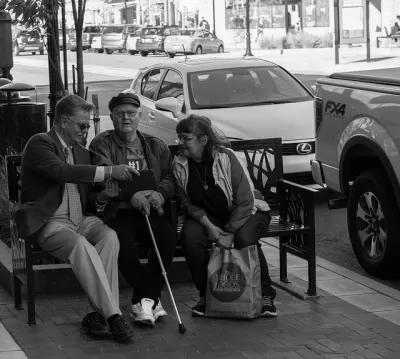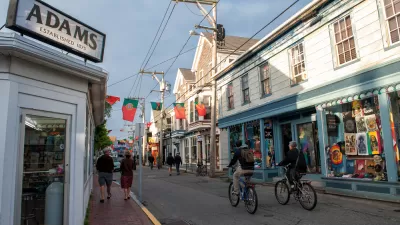Making streets, sidewalks safer for people with limited mobility.

By Jessica Zimmer
Before the City of Concord renovated its Main Street, residents and visitors had to walk up two steps to access the restaurants and storefronts along the western side of the road.
New Hampshire’s capital city eliminated the double-step curbs as part of a larger downtown complete streets project, which aimed to improve access for people with disabilities and spur economic development. The city also created additional handicapped parking spaces and converted a portion of the Main Street from four lanes to two lanes and added a six-foot center median to slow vehicles and reduce the distance for pedestrians crossing the busy street.
“We call Concord’s Main Street New Hampshire’s Main Street, and Concord’s downtown New Hampshire’s downtown,” Concord City Engineer Ed Roberge said. “Making Main Street more accessible is something in which the city takes great pride.”
Concord’s project is just one example of ways communities are trying to make streets and sidewalks more accessible for senior citizens and people with physical disabilities. Across North America, cities are employing different tactics including removing lanes of traffic, adding rest benches with shade and medians with greenery, installing raised crosswalks to slow traffic, working with businesses to build ramps and eliminating obstacles in sidewalks.
These measures are necessary to help avoid injury and inconvenience to the 18.2 million or 7.5 percent of adults in the United States that have extreme difficulty walking or are unable to walk a quarter mile. As the country’s population ages, an increasing percentage of Americans with disabilities are 55 and older.
One factor driving good design is the adoption of complete streets policies, a national initiative being spearheaded by Smart Growth America, a Washington, D.C. non-profit organization. Complete streets is an approach that advocates for transportation projects being planned, maintained and designed so all users can access the roadway.
Emiko Atherton, director of the National Complete Streets Coalition, a Smart Growth program, said one of complete streets’ goals is to eliminate traffic fatalities.
“You can design away a lot of behavior,” she said.
FULL STORY: Breaking Down Barriers

Maui's Vacation Rental Debate Turns Ugly
Verbal attacks, misinformation campaigns and fistfights plague a high-stakes debate to convert thousands of vacation rentals into long-term housing.

Planetizen Federal Action Tracker
A weekly monitor of how Trump’s orders and actions are impacting planners and planning in America.

In Urban Planning, AI Prompting Could be the New Design Thinking
Creativity has long been key to great urban design. What if we see AI as our new creative partner?

King County Supportive Housing Program Offers Hope for Unhoused Residents
The county is taking a ‘Housing First’ approach that prioritizes getting people into housing, then offering wraparound supportive services.

Researchers Use AI to Get Clearer Picture of US Housing
Analysts are using artificial intelligence to supercharge their research by allowing them to comb through data faster. Though these AI tools can be error prone, they save time and housing researchers are optimistic about the future.

Making Shared Micromobility More Inclusive
Cities and shared mobility system operators can do more to include people with disabilities in planning and operations, per a new report.
Urban Design for Planners 1: Software Tools
This six-course series explores essential urban design concepts using open source software and equips planners with the tools they need to participate fully in the urban design process.
Planning for Universal Design
Learn the tools for implementing Universal Design in planning regulations.
planning NEXT
Appalachian Highlands Housing Partners
Mpact (founded as Rail~Volution)
City of Camden Redevelopment Agency
City of Astoria
City of Portland
City of Laramie





























